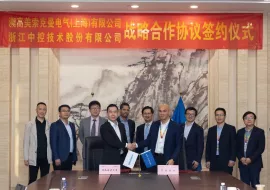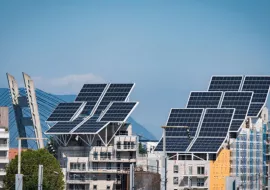Although buildings contribute to rising carbon emissions, they can also be agents of change in terms of helping to identify solutions. New buildings are only part of the issue – as legacy infrastructure remains in situ, present and polluting. Despite the fact that new buildings might be created with a green and clean agenda, they do not always directly replace existing infrastructure or decarbonise in their own right, which makes decarbonisation through renovation an attractive option - particularly in terms of the optimisation of energy consumption. Retrofit can be a cost-effective way to reduce operating emissions.
Decarbonising our built environments – combining net-zero or carbon negative construction with an improvement in the energy efficiency of our existing bricks and mortar infrastructure - can help reduce emissions by using less energy in their creation and operation, even creating more energy than they use and feeding it back to the grid.
The building lifecycle
According to data from the international Build & Connect conference, Strasbourg 2020, in France alone, buildings account for 25% of greenhouse gas emissions and 50% of all energy consumed – the biggest source of energy consumption being heating, from oil and gas in particular. Thanks to regulation and innovation, between 2005 and 2018 the energy consumption of buildings decreased despite the population increasing.
With the objective of decarbonisation by 2050 (source: the International Energy Agency global roadmap, May 2021), it is vital to consider a building’s lifecycle in entirety – from design to construction. For example, the construction phase may account for 45% of the gas emissions of a building – but it is important not to lose sight of potential solutions including bio-sourced materials and the auto-production of energy.
Using data to drive decarbonisation
Building awareness of the value of AI and smart grids is a key component when it comes to raising awareness of the energy-related economy. Training and education at all levels within an organisation – and industry – will help to harness the greatest potential of new ways of working and developments in technology.
Overcoming data sovereignty challenges and cyber security concerns will help provide confidence in allowing data to be used in an energy saving role. For instance, data can help produce 3D modelling to better understand a building and identify energy saving opportunities, whilst also helping to share plans to ensure that the vision is transparent and accessible to all. Public buildings can benefit from this approach by deploying resources more effectively – for example, ensuring that a school is not heated during the evening, overnight or during holidays.
Energy storage and renewable: key enablers of decarbonisation
Thierry Jost, Offer & Application Marketing Director Socomec, comments; “Creating a more diversified energy supply and reducing dependence on specific sources or imported fuels are key drivers in the decarbonisation of infrastructure. With the gradual depletion of fossil fuels and the increasing emphasis on the reduction of greenhouse gas emissions, the large-scale integration of renewable energy sources into electrical grids – especially low and medium voltage networks – is increasingly vital. Energy storage and measurement systems will play a key role in the development of solutions for decarbonised buildings and smart grids - energy positive or resilient buildings, isolated microgrid - helping us all to build a better future, starting today, where we design with decarbonisation in mind from the outset.“









